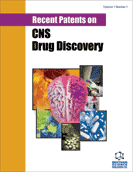Abstract
Transglutaminases are ubiquitous enzymes which catalyze post-translational modifications of proteins. The main activity of these enzymes is the cross-linking of glutaminyl residues of a protein/peptide substrate to lysyl residues of a protein/peptide co-substrate. In addition to lysyl residues, other nucleophilic co-substrates may include monoamines or polyamines (to form mono- or bi-substituted /crosslinked adducts) or -OH groups (to form ester linkages). In absence of co-substrates, the nucleophile may be water, resulting in the net deamidation of the glutaminyl residue. Recently, “tissue” transglutaminase, a member of the transglutaminase family of enzymes, has been shown to be involved in the molecular mechanisms responsible for a very widespread human pathology, celiac disease. Transglutaminase activity has also been hypothesized to be involved in the pathogenetic mechanisms responsible for several other human diseases, including neurodegenerative diseases, often associated to celiac disease. Neurodegenerative diseases, such as Alzheimer’s disease, Parkinson’s disease, supranuclear palsy, Huntington’s disease and other polyglutamine diseases, are characterized in part by aberrant cerebral transglutaminase activity and by increased cross-linked proteins in affected brains. This review focuses on the possible therapeutic effects of transglutaminase inhibitors and their recent patents for the cure of patients with diseases characterized by aberrant transglutaminase activity and on the strategies to design such transglutaminase inhibitors.
Keywords: Transglutaminases, post-translational modifications of proteins, protein aggregation, neurodegenerative diseases, transglutaminase inhibitors, cystamine.
 6
6





















